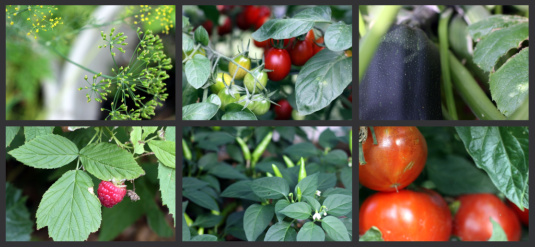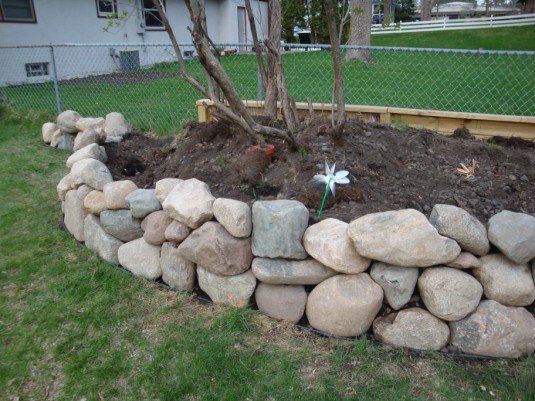When I considered what I would plant in my garden in the spring after Ole had finished placing each and every rock around the bed, I really just picked things that I liked. I didn’t do much planning or thoughtful introspection. I knew I wanted a kitchen garden, a potager, and already had my herbs in pots. I went to the farmer’s market, looked around, found a few things I knew I wanted like everbearing strawberries and tomatoes, picked out a few more items and then I just went for it. I planted the tall stuff in the back and attempted to get the shorter stuff in the front. I chose plants for all the way around the rock wall and even found perennial falling sedums and flowers that would grow down the side of the wall. I took into account the sun and shade and planted.

Now is as good a time as any to start planting your green garden for next year. Here are a few things to get you motivated and started with your plans.
::Plan your space. If you don’t have the time to do it yourself, look at a few examples online and just put a bit more thought into where you’re going to put each plant. I have already started planning my garden for next year so that my plants will be better spaced and the execution will be a little bit neater than it is this year. Knowing what kinds of of plants to plant and where I want to plant them will save time when it comes to buying them, and it will also give me the opportunity to start more seedlings myself in the very early spring when the ground is still thawing.
::Start a compost pile with grass clippings and leaves. My garden has been running all summer off nothing but dirt from the backyard, water and compost, and it is thriving to the point that people have asked what we’re feeding the plants to get them so big. Compost. We redid our compost bin this year, but we used a good deal of our previous compost to fill the raised bed garden that we made. The compost is nutrient-packed and the perfect way to help your plants take off and thrive. Try making one out of a $5.00 garbage can and throw lawn clippings, raked leaves and plant scraps in them all fall. By spring, you’ll have a broken down mix of compost ready for your new garden.
::Dry and save pepper seeds from chilies for next year. Buying red pepper flakes in bulk is my way of keeping pests and critters out of the garden during the summer months rather than using pesticides and herbicides. Whether I sprinkle the flakes themselves after a rain or a water so they stick to the plants or I soak them in water and make a pepper spray to spray the plants with, it’s an effective way to keep bugs and bunnies from eating my crops as they grow. Rather than buy bags and bottles full of red pepper flakes all summer, I keep the cost minimal by collecting pepper seeds while making guacamole or any other number of dishes, dry them out for a day in a bowl and then collect them in a jar in the cupboard. I will also use the leftover dried chilies from the garden to add to the pepper mix. Come spring, I am ready to go at the first sign of crawling bugs or hungry rabbits.
::Get started on your raised bed.If you have an area to clean, clear or otherwise prepare before you would be able to plant in the spring, consider starting that process this fall. A lot of times, spring sneaks up on us, as does the yard work that comes with it, and before you know it, it’s May or even June and nothing is in the ground. Starting the process now will make it easier and less stressful to be ready for planting when the weather warms.







Preparing my garden for the next season is one of my favorite things – I love thinking about what I’ll grow next year and planning everything out 🙂
I am hungry now.
Great Work.
Thank you very much for the great information!